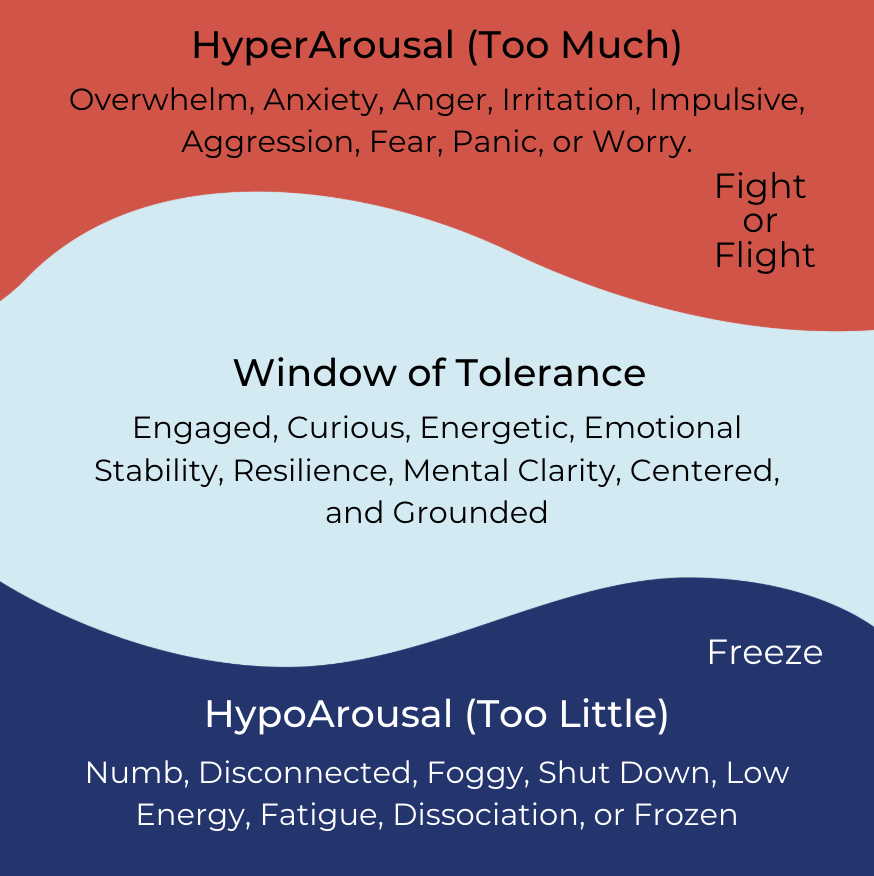Understanding the Window of Tolerance: How to Expand Your Capacity for Stress
Have you ever noticed that some days, you can handle challenges with ease, while other days, even the smallest inconvenience feels overwhelming? This has a lot to do with your Window of Tolerance.
What is the Window of Tolerance?
The Window of Tolerance is a concept in neuroscience and psychology that describes the optimal zone where you feel calm, focused, and capable of handling life’s ups and downs. When you're within this window, you can process emotions, think clearly, and respond to stress in a balanced way.
However, when life throws too much at you, you may find yourself pushed outside this window—either into a hyperaroused state (feeling overwhelmed, anxious, or reactive) or a hypoaroused state (feeling numb, disconnected, or shut down).
What Shrinks Your Window of Tolerance?
Your ability to stay within your window isn’t fixed—it can expand or shrink depending on various factors. Some common things that make your Window of Tolerance smaller include:
🚫 Chronic Stress – Ongoing stressors, whether from work, relationships, or personal struggles, can make it harder to regulate emotions.
🚫 Unprocessed Trauma – Past traumatic experiences can leave your nervous system on high alert, making it easier to become overwhelmed.
🚫 Lack of Sleep – Poor sleep reduces emotional resilience, making small stressors feel much bigger.
🚫 Unmet Needs – Ignoring basic needs like food, hydration, rest, or social connection can lead to emotional dysregulation.
When your window shrinks, it becomes much easier to get stuck in a stress response, either in a heightened state of anxiety and frustration or feeling emotionally disconnected and exhausted.
How to Widen Your Window of Tolerance
The good news? You can teach your nervous system to handle stress more effectively by gradually expanding your Window of Tolerance. Here’s how:
✅ Grounding Practices – Techniques like deep breathing, mindfulness, and sensory awareness help bring you back into the present moment and regulate your nervous system.
✅ Physical Movement – Stretching, walking, dancing, or even shaking out tension can help release built-up stress and reset your body.
✅ Connection & Support – Talking to a trusted friend, therapist, or support group can provide reassurance and perspective, helping to ease emotional overwhelm.
✅ Self-Care & Nervous System Regulation – Prioritizing sleep, proper nutrition, hydration, and rest strengthens your ability to handle stress.
Building Emotional Resilience Takes Time
Expanding your Window of Tolerance isn’t about avoiding stress altogether—it’s about building your capacity to navigate it more effectively. Small, consistent habits make a big difference in how you respond to life’s challenges.
By supporting your nervous system and meeting your needs, you create a foundation for greater emotional regulation, resilience, and well-being.
Which of these strategies helps you the most? Let me know in the comments!






